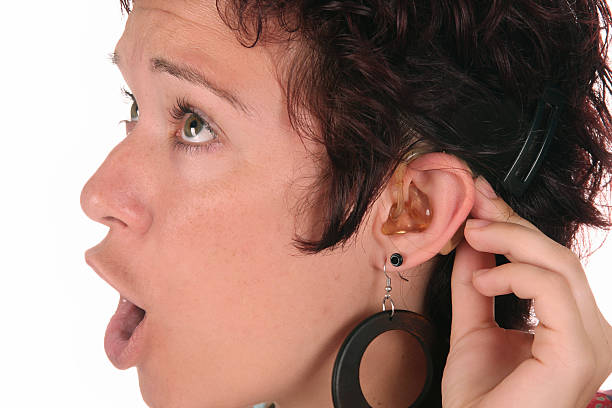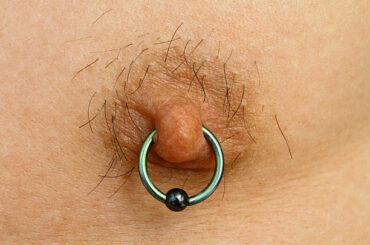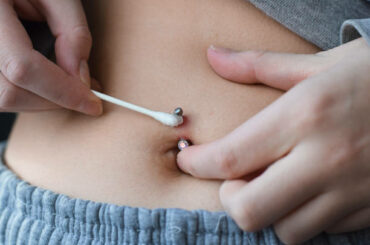Contents
Swollen Helix Piercings

Swollen helix piercings can be more than just a temporary inconvenience—they can disrupt daily life and raise concerns about potential complications. Whether you’re a piercing enthusiast or a newcomer to the world of body art, encountering swelling around a helix piercing can be alarming. Understanding the root causes, identifying warning signs, and knowing how to effectively manage and prevent swelling are vital aspects of ensuring a smooth piercing experience.
In this article, we’ll delve into the complexities of swollen helix piercings, exploring the various factors that contribute to this condition and offering practical advice on how to address it. From recognizing the signs of infection to implementing soothing remedies, we’ll cover everything you need to know to navigate the challenges of a swollen helix piercing with confidence.
Join us as we embark on a journey to uncover the mysteries of swollen helix piercings, empowering you to make informed decisions and take proactive steps toward optimal piercing health and well-being.
Common Causes for Swollen Helix Piercings
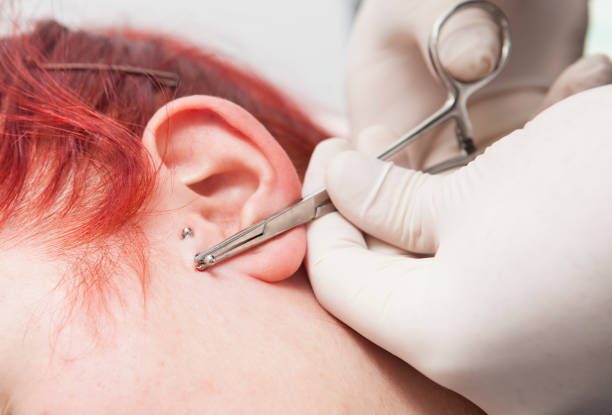
Swollen helix piercings can be attributed to various factors, each contributing to the discomfort and inconvenience experienced by individuals seeking to adorn their ears with this fashionable form of body art. Understanding these causes is paramount in effectively addressing and managing swelling around a helix piercing.
One prevalent cause of swollen helix piercings is infection. When bacteria enter the piercing site, whether through improper aftercare practices or exposure to contaminated environments, it can lead to inflammation and swelling. This inflammatory response is the body’s natural defense mechanism against invading pathogens, resulting in discomfort and heightened sensitivity around the piercing area.
Trauma is another common culprit behind swollen helix piercings. Accidental bumping, tugging, or pulling on the piercing can irritate and disrupt the delicate healing process. The tissue surrounding the piercing becomes inflamed as a protective response, leading to swelling and tenderness. It’s essential to handle the piercing with care and avoid activities or situations that may pose a risk of trauma to prevent exacerbating swelling.
Allergic reactions to metal jewelry, particularly nickel, can also trigger swelling in helix piercings. Nickel allergy is relatively common and can manifest as redness, itching, and swelling around the piercing site. Individuals with known sensitivities to certain metals should opt for hypoallergenic or high-quality jewelry made from materials like titanium or gold to minimize the risk of allergic reactions and associated swelling.
Improper aftercare practices can exacerbate swelling in helix piercings. Over-cleaning the piercing or using harsh cleaning products can strip the skin of its natural oils and disrupt the delicate balance of microorganisms, leading to irritation and inflammation. It’s essential to follow the aftercare instructions provided by the piercer and avoid using alcohol-based solutions or hydrogen peroxide, as these can further irritate the piercing and prolong swelling.
Lastly, the initial healing process of a helix piercing can also contribute to temporary swelling. During the first few weeks after getting pierced, In the initial weeks following a piercing, it’s typical for the body to undergo an inflammatory response as part of its natural healing process. However, excessive swelling beyond the initial healing period may indicate complications or underlying issues that require attention.
swollen helix piercings can result from various factors, including infection, trauma, allergic reactions, improper aftercare, and the natural healing process. By understanding these common causes, individuals can take proactive measures to minimize swelling, promote healing, and ensure a smooth piercing experience. Consulting with a professional piercer or healthcare provider is recommended if experiencing persistent or severe swelling to rule out any complications and receive appropriate treatment.
Identifying Swelling and Signs of Complications in Swollen Helix Piercings
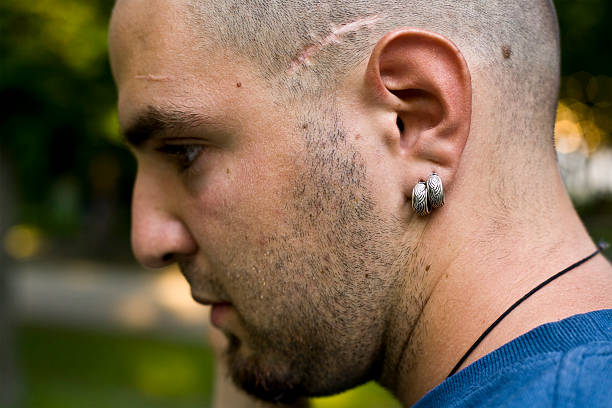
Identifying swelling and signs of complications in swollen helix piercings is paramount for ensuring the health and well-being of individuals with this type of piercing. By understanding the symptoms associated with inflammation and potential complications, individuals can take prompt action to address any issues and prevent further complications.
When it comes to swollen helix piercings, recognizing swelling is the first step in identifying potential complications. Swelling around the piercing site is typically accompanied by redness, tenderness, and warmth in the surrounding area. The skin may appear swollen or puffy, and individuals may experience discomfort or pain when touching or moving the piercing. It’s important to note that some degree of swelling is normal during the initial healing period of a piercing. However, excessive or prolonged swelling beyond the typical range may indicate underlying problems such as infection or allergic reaction.
In addition to swelling, certain signs may indicate complications in a swollen helix piercing, warranting further attention and evaluation. One of the most concerning signs is the presence of pus or discharge around the piercing site. Pus is a sign of infection and may be accompanied by increased pain, sensitivity, or a foul odor emanating from the piercing. If individuals notice any discharge or unusual fluid coming from the piercing, it’s crucial to seek medical advice promptly.
Other signs of complications in swollen helix piercings include increased pain or discomfort that does not improve with time, as well as the development of fever or chills. These symptoms may indicate a systemic response to infection and should be taken seriously. Additionally, allergic reactions to metal jewelry can manifest as swelling, redness, itching, or rash around the piercing site. If individuals suspect an allergic reaction, switching to hypoallergenic materials such as titanium or gold can help alleviate symptoms and prevent further complications.
Complications such as abscesses, keloids, or hypertrophic scarring may also occur in swollen helix piercings, particularly if the swelling is left untreated or if the piercing becomes infected. These complications may require medical intervention, such as drainage of abscesses or corticosteroid injections to reduce scarring.
Overall, being vigilant in identifying swelling and signs of complications in swollen helix piercings is crucial for ensuring a successful piercing experience. Regular monitoring of the piercing site, adherence to proper aftercare practices, and seeking professional medical advice when necessary are essential steps in mitigating complications and promoting optimal healing outcomes. By recognizing and addressing any issues promptly, individuals can enjoy their helix piercings without unnecessary discomfort or complications.
Remedies and Treatment for Swollen Helix Piercings

Remedies and treatments for swollen helix piercings play a vital role in alleviating discomfort, promoting healing, and preventing further complications. Whether the swelling is due to infection, trauma, allergic reaction, or other factors, addressing it promptly and effectively is essential for ensuring a successful piercing experience.
One of the most commonly recommended remedies for swollen helix piercings is saline solution soaks. The saline solution helps to cleanse the piercing site, reduce inflammation, and promote healing. To prepare a saline solution soak, mix a quarter teaspoon of non-iodized sea salt with eight ounces of warm distilled water. Soak a clean cotton ball or gauze pad in the saline solution and gently apply it to the swollen helix piercing for several minutes, two to three times a day. This can help soothe the area around your swollen helix piercing and reduce swelling.
Over-the-counter pain relievers such as ibuprofen can also help manage discomfort and inflammation associated with swollen helix piercings. Medicines like ibuprofen, known as NSAIDs, can ease pain and swelling, making healing more comfortable. But remember, it’s vital to stick to the prescribed dose and talk to a doctor if you have any health issues or worries.
In addition to saline solution soaks and pain relievers, applying a cold compress to the swollen area can provide relief from inflammation and discomfort. Wrap a clean ice pack or a bag of frozen vegetables in a cloth and gently apply it to the swollen helix piercing for 10-15 minutes at a time. This can help constrict blood vessels, reduce swelling, and numb the area, providing temporary relief from pain and discomfort.
If the swelling persists or is accompanied by signs of infection, it’s crucial to seek medical attention promptly. A healthcare professional or experienced piercer can assess the piercing site, diagnose any underlying issues, and recommend appropriate treatment. In some cases, oral antibiotics or topical antimicrobial treatments may be necessary to treat infection and reduce swelling.
In cases where swelling is due to an allergic reaction to metal jewelry, switching to hypoallergenic materials such as titanium or gold may be necessary. These materials are less likely to cause allergic reactions and can help alleviate symptoms such as redness, itching, and swelling. It’s essential to avoid wearing jewelry that contains nickel or other common allergens if you suspect an allergic reaction.
Overall, the remedies and treatments for swollen helix piercings aim to reduce inflammation, alleviate discomfort, and promote healing. By following proper aftercare practices, seeking medical attention when necessary, and taking steps to address underlying issues such as infection or allergic reaction, individuals can effectively manage swelling and ensure a successful piercing experience.
Preventing Swelling in swollen helix Piercings

Preventing swelling in swollen helix piercings is crucial for ensuring a smooth and comfortable healing process. By following proper aftercare practices and taking preventive measures, individuals can minimize the risk of inflammation and promote optimal healing outcomes. Here are some key strategies for preventing swelling in swollen helix piercings:
1. Choose high-quality jewelry: Choose jewelry made from hypoallergenic materials such as titanium, surgical-grade stainless steel, or gold. Avoid jewelry containing nickel or other common allergens, as allergic reactions can contribute to swelling and irritation.
2. Proper piercing technique: Ensure that your helix piercing is performed by a professional piercer using sterile equipment and techniques. A skilled piercer will minimize trauma to the piercing site, reducing the risk of inflammation and swelling.
3. Follow aftercare instructions: Adhere to the aftercare instructions provided by your piercer to promote healing and prevent complications. This may include cleaning the piercing site with saline solution or a gentle cleanser, avoiding harsh chemicals or alcohol-based products, and refraining from touching or twisting the jewelry.
4. Avoid trauma: Be mindful of activities that may cause trauma to the piercing site, such as sleeping on the pierced ear or wearing headphones or hats that put pressure on the piercing. Avoid bumping or tugging on the jewelry, as this can irritate the piercing and lead to swelling.
5. Maintain proper hygiene: Keep the piercing site clean and dry to prevent infection and reduce the risk of swelling. Wash your hands thoroughly before touching the piercing, and avoid swimming in pools, hot tubs, or natural bodies of water until the piercing is fully healed to prevent contamination.
6. Monitor for signs of infection: Keep an eye out for any signs of infection, such as increased redness, warmth, or tenderness around the piercing site, as well as the presence of pus or discharge. If you suspect an infection, seek medical attention promptly to prevent further complications.
7. Avoid changing jewelry too soon: Wait until the piercing is fully healed before changing the jewelry, as premature changing can disrupt the healing process and increase the risk of swelling and irritation.
By following these preventive measures and practicing proper aftercare, individuals can minimize the risk of swelling in swollen helix piercings and promote a smooth and comfortable healing process. If you have any concerns or experience persistent swelling, consult a professional piercer or healthcare provider for guidance and assistance.
In conclusion, preventing and managing swelling in swollen helix piercings requires diligence, proper aftercare, and prompt attention to any signs of complications. By following recommended practices, such as choosing high-quality jewelry, practicing good hygiene, and seeking medical attention, when necessary, individuals can minimize discomfort and promote optimal healing. With proactive care and attention, individuals can enjoy their helix piercings with confidence and peace of mind.

